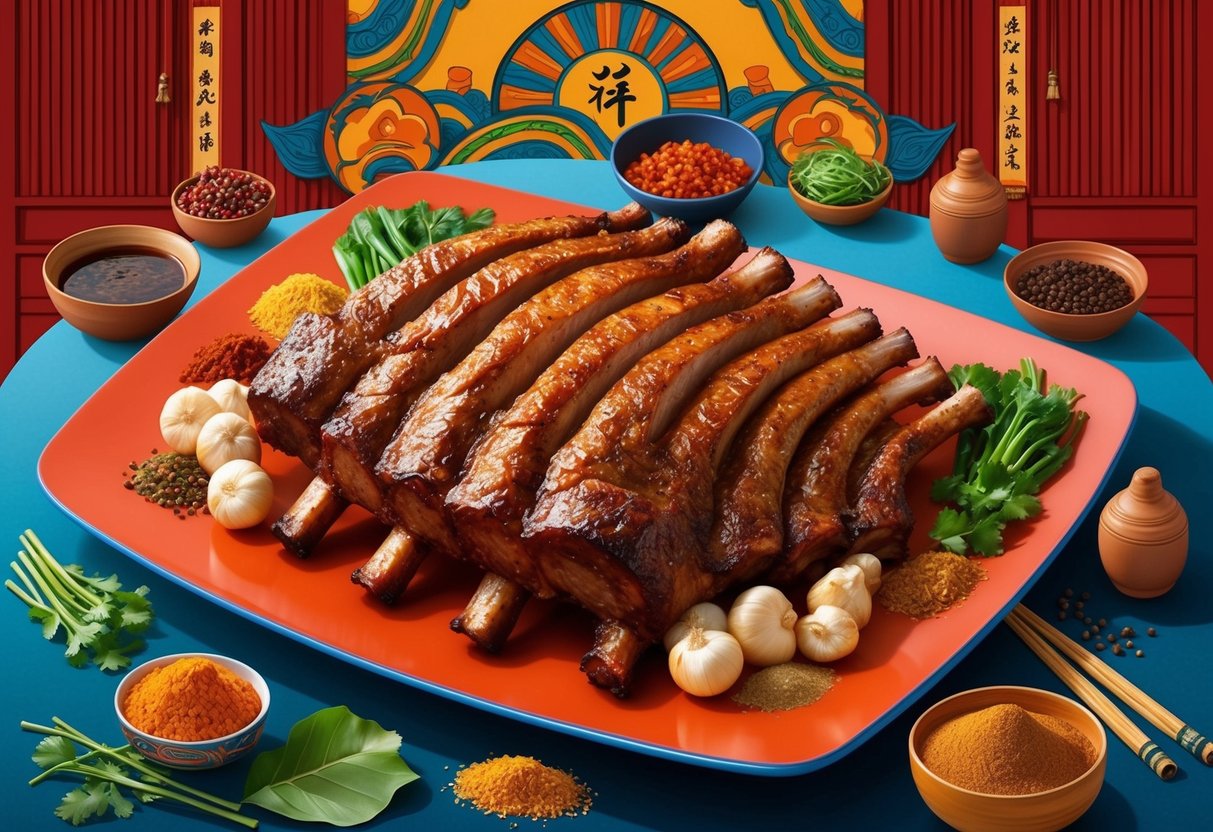
Asian-Inspired Creations: Roasted Pork Ribs
Asian-style roasted pork ribs fuse sweet, savory, and spicy elements for a deeply flavorful main dish. Layers of aromatic ingredients, careful seasoning, and detailed roasting methods give these ribs their distinctive taste and tender texture.
Marinades and Seasonings
Marinating is essential for infusing flavor into pork ribs. A common technique is to use a base of soy sauce, hoisin sauce, or oyster sauce for saltiness and umami.
Sriracha, chili paste, or fresh ginger add heat, while honey or brown sugar contribute a caramelized sweetness. Traditional Asian-inspired marinades often include ingredients like garlic, sesame oil, and rice vinegar.
These not only balance flavors but also help tenderize the meat. A sprinkle of black and white sesame seeds or thinly sliced scallions finishes the ribs, offering extra texture and freshness after roasting.
An effective approach is to marinate the pork ribs for at least 2 hours, or overnight for deeper penetration. Adjust the seasoning quantities to achieve the preferred flavor profile—sweeter, more savory, or with a pronounced spicy kick, depending on taste preferences.
For more ideas, the recipe for sticky Asian baked pork ribs uses a balanced, robust marinade.
Mastering Roasting Techniques
When roasting pork ribs, proper technique is vital for texture and flavor. Preheat the oven to 325°F (163°C) and use a foil-lined baking tray for easy cleanup.
Place the marinated ribs meat-side up and cover tightly with foil for the first phase to retain moisture. Bake low and slow for about 2 hours.
This gentle heat helps break down connective tissue, making the ribs tender but not mushy. Remove the foil for the final 30 minutes of cooking to develop a caramelized, sticky glaze on the surface.
Baste the ribs with reserved marinade or glaze every 10-15 minutes during the uncovered phase for even more flavor. Let the roasted pork ribs rest briefly before slicing to retain juiciness.
For step-by-step roasting visuals and tips, consider the succulent & tender Asian pork ribs guide.
Mediterranean Delights: Leg of Lamb
A Mediterranean-style leg of lamb is prized for its bold flavor, tender texture, and impressive presentation. Careful selection of herbs, spices, and side dishes transforms this cut into one of the region’s most celebrated delicious dishes.
Herbs and Spices
The key to an aromatic roasted leg of lamb is a balanced blend of herbs and spices. Most recipes start with a generous rub of fresh garlic, rosemary, and thyme.
These infuse the meat with earthy, savory notes while complementing its richness. Cooks often add oregano, cumin, and coriander for deeper Mediterranean character, sometimes blending in a touch of lemon zest or juice for acidity.
A drizzle of olive oil helps the seasoning adhere, keeping the lamb juicy throughout roasting. A Mediterranean-style leg of lamb recipe may also use cracked black pepper and sea salt to balance flavors.
Marinating overnight boosts flavor development. For a Greek-inspired variation, a lemon-based marinade provides brightness and helps tenderize the meat.
Pairing with Sides
Traditional Mediterranean sides play a crucial role in the meal. Roasted potatoes, seasoned with olive oil, herbs, and sometimes garlic, are the classic choice served alongside the lamb.
The potatoes soak up the savory juices, adding flavor and texture. Tzatziki or yogurt-based dips provide a cool, creamy contrast to the hot, savory lamb.
Lemony Greek salads with crisp cucumbers, tomatoes, feta, and olives add freshness and acidity. A table often features warm, crusty bread or pita, allowing diners to savor every bit of pan juices.
For added color and nutrients, consider grilled vegetables such as zucchini, eggplant, and peppers. Pairing options make the Mediterranean leg of lamb a centerpiece for delicious, balanced feasts.



